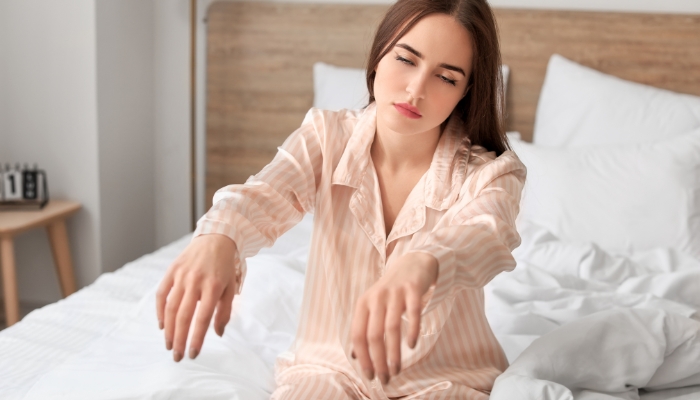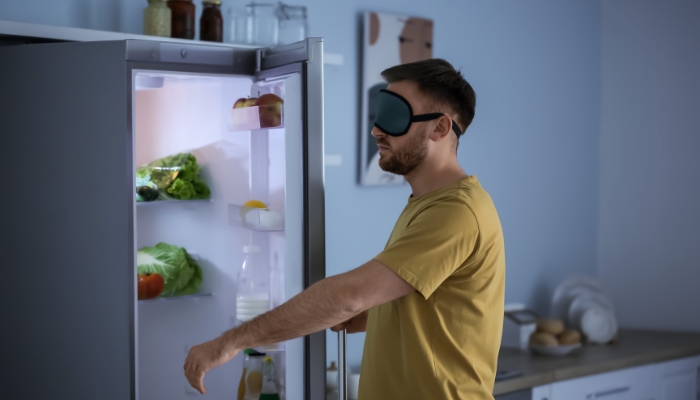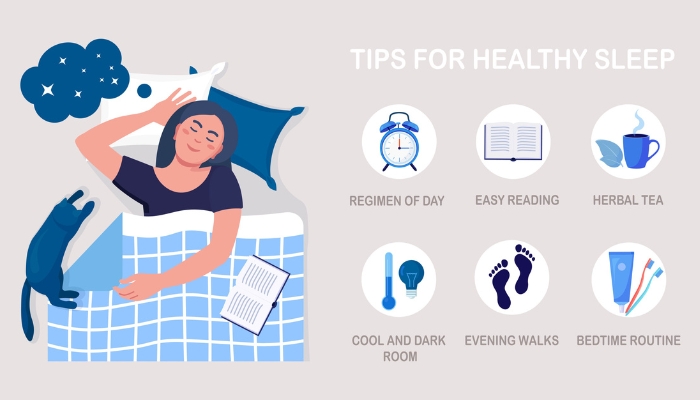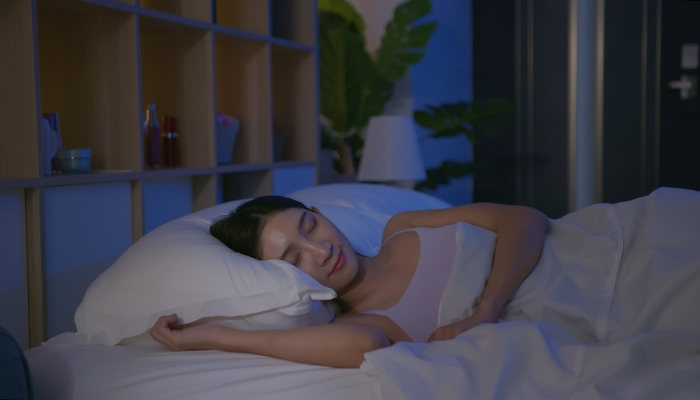Sleepwalking is a bit of a mystery, isn't it? One minute you're tucked up in bed, and the next, you're roaming the house, all while fast asleep. It's a strange phenomenon affecting kids and adults, with about four percent of grown-ups prone to nocturnal wandering.
But what's really going on when you sleepwalk? And more importantly, how can you make sure it doesn't mess with your much-needed rest? Let's unravel the mystery and science of sleepwalking together.
Disclaimer: The content provided in this blog is for informational purposes only and is not intended as a substitute for professional medical advice, diagnosis, or treatment. Always seek the advice of your physician or other qualified health provider with any questions you may have regarding a medical condition or your sleep health.
Unraveling the Sleepwalking Mystery

Sleepwalking, or somnambulism if you want to get technical, is a behavioral disorder that happens during the deepest stage of sleep. It's like your body decides to go on an adventure while your mind is still snoozing. This usually occurs during the first half of the night, when your body is in the non-REM (NREM) stage of sleep, also known as deep sleep.
While sleepwalking is more common in children, with about 29 percent of kids between 2 to 13 years old experiencing it, adults aren't immune. So, if you've ever woken up to find yourself in a different place than you went to sleep, you're not alone!
Sleepwalking: More Than Just Walking

When we say sleepwalking, it's not just about taking a midnight stroll. It's a bit more complex than that and can involve various activities. Sleepwalking episodes can last from a few seconds to half an hour and can include:
- Taking a walk or even breaking into a run, all while still in dreamland.
- Having open eyes but with a far-off, blank look, as if gazing into another world.
- Speaking minimally or in a way that doesn't make sense, like having a conversation in a dream.
- Performing routine actions, like getting dressed or going to the bathroom, but in the most unusual places.
The weirdest part? When the person wakes up, they usually have no memory of their nighttime escapades. But they usually feel more exhausted than usual — which makes sense!
Why Sleepwalking Happens
Sleepwalking is a bit like your body deciding to throw a party while your brain is out of the office, but what causes the sudden change? There are more triggers than you think! Some triggers include sleep deprivation, medications, fevers, stress, or restless leg syndrome. But sometimes it's just genetics, so if you're siblings or parents sleepwalk, chances are you do or will too.
But don't worry! It's not a hopeless situation. There are strategies to manage sleepwalking, and we'll dive into those next!
Tackling Sleepwalking Head-On

While sleepwalking might seem like a daunting issue, there are quite a few strategies you can use to help manage it. Some of these strategies include the following methods:
- Treat Underlying Conditions: If sleepwalking is triggered by certain medications or conditions like sleep deprivation or restless leg syndrome, addressing these issues can help. Always consult with a healthcare professional for guidance.
- Create a Relaxing Bedtime Routine: This can help signal your body that it's time to sleep. Think of warm baths, reading, or listening to calming music!
- Manage Stress: High-stress levels can trigger sleepwalking, so consider stress-reducing activities like yoga, meditation, or journaling your worries before bedtime.
- Safety First: If sleepwalking is a regular occurrence, make the environment safe by locking doors and windows, removing sharp or breakable objects from the room, and installing safety gates at the top of the stairs.
Everyone is different, so what works for one person might not work for another. Finding what works best for you might take some trial and error. But with patience and persistence, it's possible to manage sleepwalking and get the quality sleep you need.
Sleep Hygiene: Your Secret Weapon Against Sleepwalking
The biggest preventative for sleepwalking is keeping a consistent routine — otherwise known as using better sleep hygiene. It's not about washing your sheets (although that's important too!). Sleep hygiene refers to the habits and practices conducive to sleeping well on a nightly basis. The more your body is on routine, the better it can relax and help you sleep better!
But what goes into better sleep hygiene? It's much simpler than you think:
- Consistent Sleep Schedule: Going to bed and waking up at the same time every day (yes, including the weekends!) can help regulate your body's internal clock and could potentially reduce the frequency of sleepwalking episodes.
- Comfortable Sleep Environment: A quiet, dark, and cool room can help promote better sleep. And let's not forget about the importance of a comfortable, supportive mattress and pillow!
- Avoid Stimulants: Consuming caffeine or alcohol, especially close to bedtime, can interfere with your sleep cycle and potentially trigger sleepwalking. And don't forget about avoiding blue light sources 30 minutes before bed!
While these strategies won't cure sleepwalking, they can help you get the deep rest you deserve!
From Sleepwalking to Deep Sleeping

As you can see, there's more to sleepwalking than meets the eye. But even if you're a sleepwalker, you don't have to resign yourself to poor sleep. With the right strategies and a supportive mattress from Hudson Appliance, you can manage your sleepwalking and get the quality sleep you've been missing. So why wait? Start your journey to better sleep by giving us a call or dropping by!